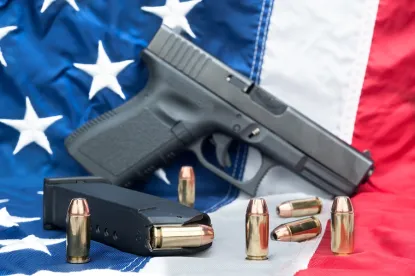In an effort to bolster his “Buy American” agenda, President Trump and his administration are taking the first steps in allowing for a more lenient oversight of American gun makers to sell non-military small arms and ammunition to foreign buyers. When complete, this plan would shift the oversight of non-military firearm sales from the State Department to the Commerce Department, easing the restrictions on exportation and, in theory, help bolster a recessed industry.
As things currently stand, all forms of weaponry – everything from small recreational shooting range pistols and hunting rifles to fighter jets and surface to air missiles– are covered by the United States Munitions List promulgated by the Department of State., set forth at 22 C.F.R. 121.1.
Every arms manufacturer intent on exporting their products out of the United States must register with the State Department and get a license for each planned export. Every sale transaction is scrutinized by U.S. officials to ensure the importing country adheres to human rights laws and to determine the likelihood of the weapons falling into the hands of parties with adverse interests to those of the United States.
Under the current regulatory structure, U.S. gun makers must compete for foreign market share with one hand tied behind their backs due to this government red tape, regulatory hurdles, and their associated costs.
Under the oversight of the Department of Commerce, the driving force behind the new, eased export regulations will be the reduction of the U.S. trade deficit rather than strict arms control. Non-military small arms are likely to fall under the supervision of the Commerce Control List which requires far less scrutiny that the U.S. Munitions list. Export hurdles could be as slight as (1) determining the product’s Export Control Classification number, (2) delineating where the product is going, (3) stating who the end-user is intended to be, and (4) what will the end use of the product be.
Under the new regulatory scheme, of the $4 billion in commercial firearm exports overseen by the State Department last year, $3.2 billion would have fallen under the control of Commerce, according to Reuters. With the new streamlined export protocols, U.S. gun makers stand to benefit to the tune of an estimated 15 to 20 percent increase in annual sales.
As things stand, these new changes can be enacted without congressional approval and could begin being implemented as early as the first half of next year.
So what does this all mean for the supply chains of U.S. based small arms manufacturers and the defense industry as a whole? Support industries selling components for small arms should see growing oversees opportunities, opening up the global small arms supply chain to new players.
For now, keep an ear to the ground in the coming months for more formal announcements of the proposed changes.
Ketan Ganase Authored this post.



 />i
/>i

